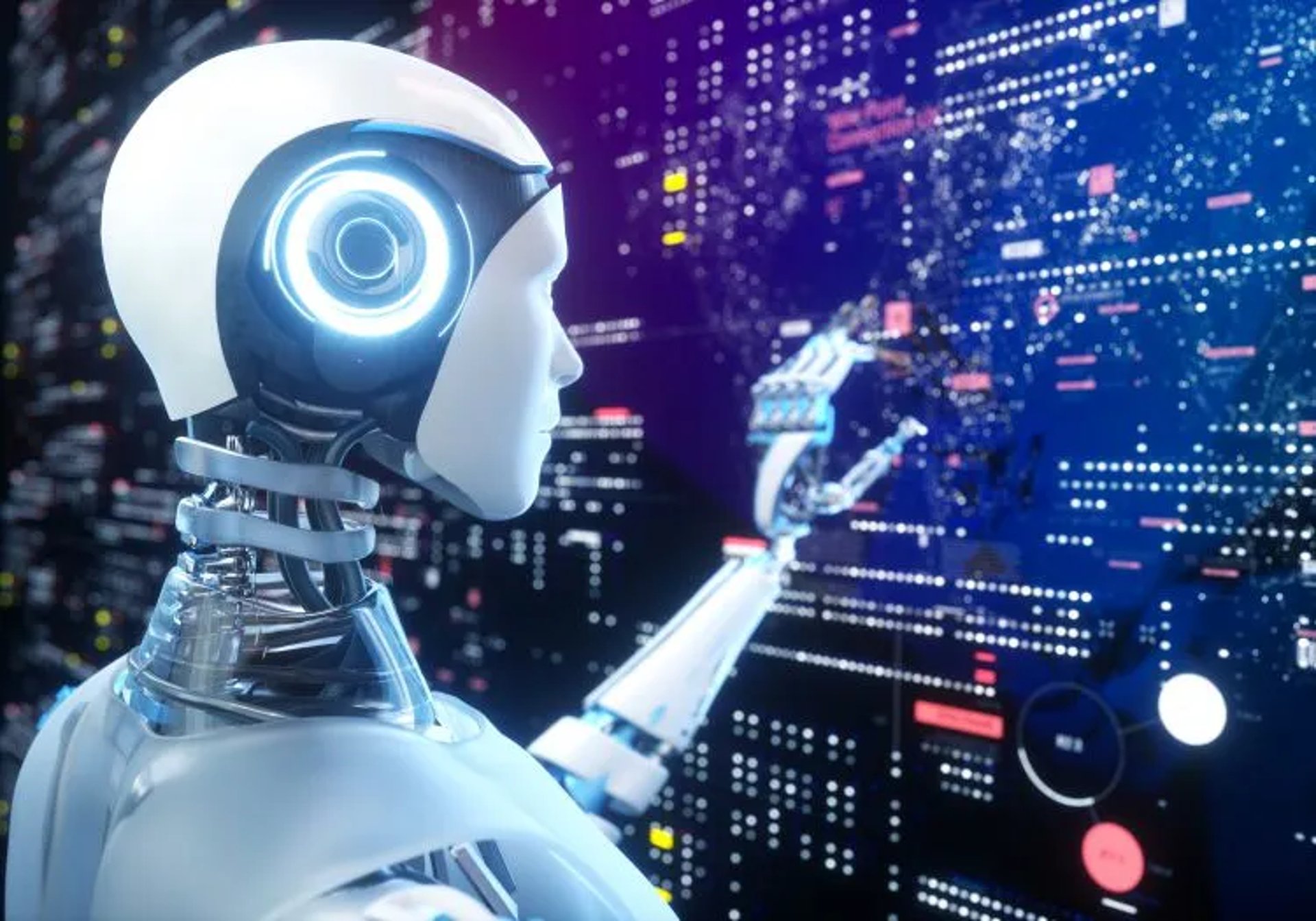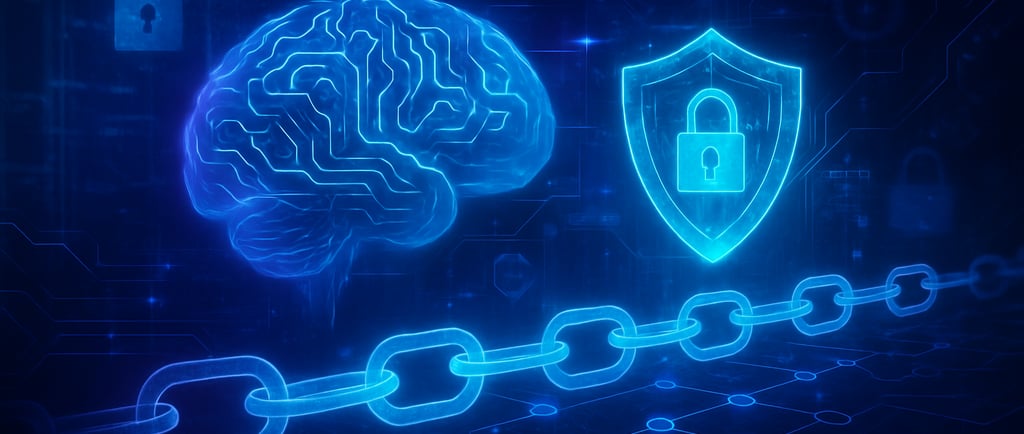
Supply Chain and AI Risks
Ever changing tech landscape with new risks
Shane Brown
4/26/20255 min read


Supply Chain and AI Risks: The New Cybersecurity Frontier in 2025
The convergence of artificial intelligence (AI) and global supply chains is reshaping the cybersecurity landscape in 2025. As organizations increasingly digitize operations and rely on complex networks of third-party vendors and cloud services, both opportunities and risks are multiplying exponentially. This article explores the latest threats at this intersection and provides guidance on how to navigate them effectively.
Supply Chain Vulnerabilities: The Weakest Link Problem
Supply chain vulnerabilities have emerged as the top ecosystem cyber risk for large organizations, with 54% citing them as their primary barrier to achieving cyber resilience[1]. The highly interconnected nature of modern supply chains means that a single weak link—often a smaller vendor with fewer security resources—can expose entire networks to cascading cyberattacks[1,8].
Several high-profile breaches in 2025 have demonstrated that threats to one supplier can rapidly disrupt entire industries and even national economies[8]. The problem is exacerbated by three key factors:
Cyber inequity: Smaller suppliers typically lack the resources needed for robust cybersecurity, making them prime targets for sophisticated attackers seeking entry into larger organizations[1].
Third-party credential theft: Weak authentication systems at vendor companies can provide hackers with backdoor access into multiple client organizations simultaneously[5].
Operational technology (OT) attacks: Hackers are increasingly targeting not just IT systems but also the industrial machinery, robotics, and control systems that keep physical supply chains running[6,8].
AI: A Double-Edged Sword in Cybersecurity
Artificial intelligence is revolutionizing both cyber defense and offense. While it enables organizations to detect and respond to threats more quickly and effectively, it also empowers attackers to scale and sophisticate their campaigns to unprecedented levels.
AI-Enhanced Attack Vectors
AI-powered phishing: Generative AI now crafts highly convincing phishing emails and deepfakes, dramatically increasing the success rate of social engineering attacks. In 2025, AI-generated phishing emails have achieved a 54% click-through rate, far surpassing those written by humans[2].
Malware automation: AI allows cybercriminals to automate malware development, adapt ransomware to evade detection systems, and lower the technical barrier for launching sophisticated attacks[2,5].
Supply chain manipulation: Attackers are using AI to identify and weaponize vulnerabilities in software supply chains, including inserting malicious code into trusted updates or open-source packages[5].
Emerging AI-Driven Supply Chain Threats
1. "Slopsquatting" and Package Hallucinations
A particularly insidious threat dubbed "slopsquatting" has emerged in 2025, where large language models (LLMs) hallucinate fictitious software package names in generated code. Threat actors then publish malicious packages with these exact names, anticipating that developers will unknowingly download and incorporate them into production systems. This can compromise entire codebases and software dependency chains[3].
Research has found hallucinated package references in up to 22% of code generated by popular open-source LLMs, creating a vast attack surface for exploitation[3,17].
2. Attacks on the AI Development Pipeline
Malicious actors are now targeting the tools, frameworks, and data used to build AI systems themselves. Researchers have discovered sophisticated malware hidden in files used by AI development platforms, as well as coordinated attempts to poison training data to manipulate model behavior[4,7].
The potential consequences are severe: AI systems that make biased decisions, leak sensitive information, or even operate under malicious control. As organizations increasingly rely on AI for critical decision-making, this threat vector represents a significant risk to business continuity and security[18].
3. Data Poisoning and Prompt Injection
Attackers are increasingly experimenting with corrupting the data used to train AI models through "data poisoning" attacks. These attacks can potentially cause models to make harmful decisions or leak sensitive information when deployed. Similarly, prompt injection attacks—where adversaries craft inputs that trick AI systems into performing unintended actions—have become more sophisticated and difficult to detect[7,19].
Real-World Impact: From Ransomware to Critical Infrastructure
The fusion of AI capabilities with supply chain vulnerabilities has led to several concerning developments:
Ransomware-as-a-Service (RaaS): AI is making ransomware attacks more targeted, persistent, and destructive. Attackers are focusing on logistics providers, manufacturers, and critical suppliers, with fallout including billion-dollar losses and weeks-long disruptions to essential services[5,6,8].
Nation-State Threats: Adversarial governments are leveraging AI to target operational technology and critical infrastructure, raising the stakes for national security and economic stability. These attacks often exploit supply chain vulnerabilities to gain persistent access to high-value targets[6,8,20].
Organizational Response Strategies
Organizations can protect themselves by implementing a multi-layered approach:
Adopt Zero Trust Architecture: Move beyond traditional perimeter defenses and assume that every vendor, device, and user could be compromised. Implement continuous verification for all network activity[8].
Comprehensive Vendor Risk Management: Develop rigorous security standards for all suppliers, regardless of size, and continuously monitor for vulnerabilities across your extended ecosystem[1,8,15].
Secure the AI Pipeline: Protect training data, audit model behavior regularly, and implement robust testing for prompt injection and data poisoning risks. Consider implementing AI development practices that prioritize security by design[4,7,19].
Invest in Cyber Resilience: Support smaller partners with resources, training, and technology to close the cyber inequity gap. Remember that your security is only as strong as your weakest supply chain partner[1,10].
Stay Informed on Regulatory Changes: Monitor evolving frameworks such as the EU AI Act and adjust security practices accordingly to maintain compliance while strengthening your security posture[8,16].
Conclusion
In 2025, the fusion of AI capabilities with complex supply chain ecosystems creates both unprecedented opportunities and significant risks. As attackers harness AI to scale their efforts and exploit supply chain weaknesses, organizations must adopt a holistic, proactive approach to cybersecurity—securing not just their own systems, but the entire ecosystem on which they depend.
The organizations that will thrive in this new landscape will be those that view cybersecurity not as a cost center but as a strategic enabler of trusted digital transformation. By building resilience across their supply chains and implementing security by design in their AI implementations, they can navigate these challenges while continuing to innovate.
Stay vigilant, invest in resilience, and remember: your supply chain is only as strong as its weakest link.
References
[1] World Economic Forum. "5 Risk Factors: Supply Chain Interdependencies Cybersecurity." January 2025.
[2] Exploding Topics. "AI Cybersecurity Trends and Statistics." 2025.
[3] LinkedIn. "AI Hallucinations Create New Supply Chain Threat." ReversingLabs. 2025.
[4] CSO Online. "AI Development Pipeline Attacks Expand CISOs' Software Supply Chain Risk." 2025.
[5] The Hacker News. "From Third-Party Vendors to US Tariffs: Supply Chain Security Threats in 2025." April 2025.
[6] Supply Chain Strategy Media. "Cybersecurity in the Supply Chain: Key Challenges and Outlook for 2025." February 2025.
[7] Security Week. "Cyber Insights 2025: Artificial Intelligence." 2025.
[8] Barracuda. "Cybersecurity 2025 Trends: GenAI and Supply Chains Top of the Threat List." April 2025.
[9] Xeneta. "The Biggest Global Supply Chain Risks of 2025." 2025.
[10] Forbes Business Council. "Reducing Cybersecurity Risk in 2025: Consider a Supply Chain Strategy." February 2025.
[11] J.S. Held. "Global Supply Chain Disruptions and Risks Intensify 2025." Global Risk Report. 2025.
[12] IDC Blogs. "Package Hallucination: The Latest Greatest Software Supply Chain Security Threat." April 2024.
[13] ExtraHop. "Amid Rising GenAI Hacking Hysteria, Supply Chain Most at Risk." 2025.
[14] DevOps Digest. "Critical Security Threats Emerge from AI in Software Supply Chain." 2025.
[15] Fortress InfoSec. "2025 Supply Chain Cybersecurity Resources." 2025.
[16] World Economic Forum. "Artificial Intelligence and Cybersecurity: Balancing Risks and Rewards 2025." 2025.
[17] Infosecurity Magazine. "AI Hallucinations: Slopsquatting." 2025.
[18] IBM Think. "Cyber Criminals Compromising AI Software Supply Chains." 2025.
[19] Industrial Cyber. "Cybersecurity Guidance for AI Systems Supply Chains: Highlight Risks of Poisoning, Extraction, Evasion Attacks." 2025.
[20] Industrial Cyber. "Industrial Cybersecurity Market Outlook 2025: Focus on Quantifying Risk, Embracing AI, Building Operational Resilience." 2025.
Innovate
Building websites and securing your digital presence.
Connect
Support
Info@sinistergatedesigns.com
© Sinister Gate Designs, LLC 2025. All rights reserved.
